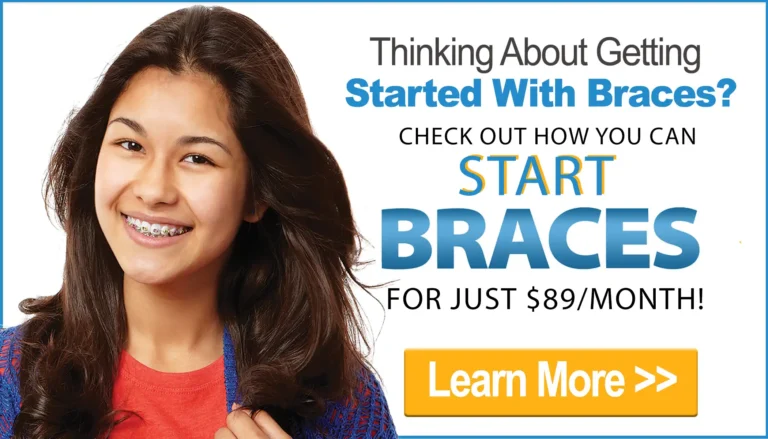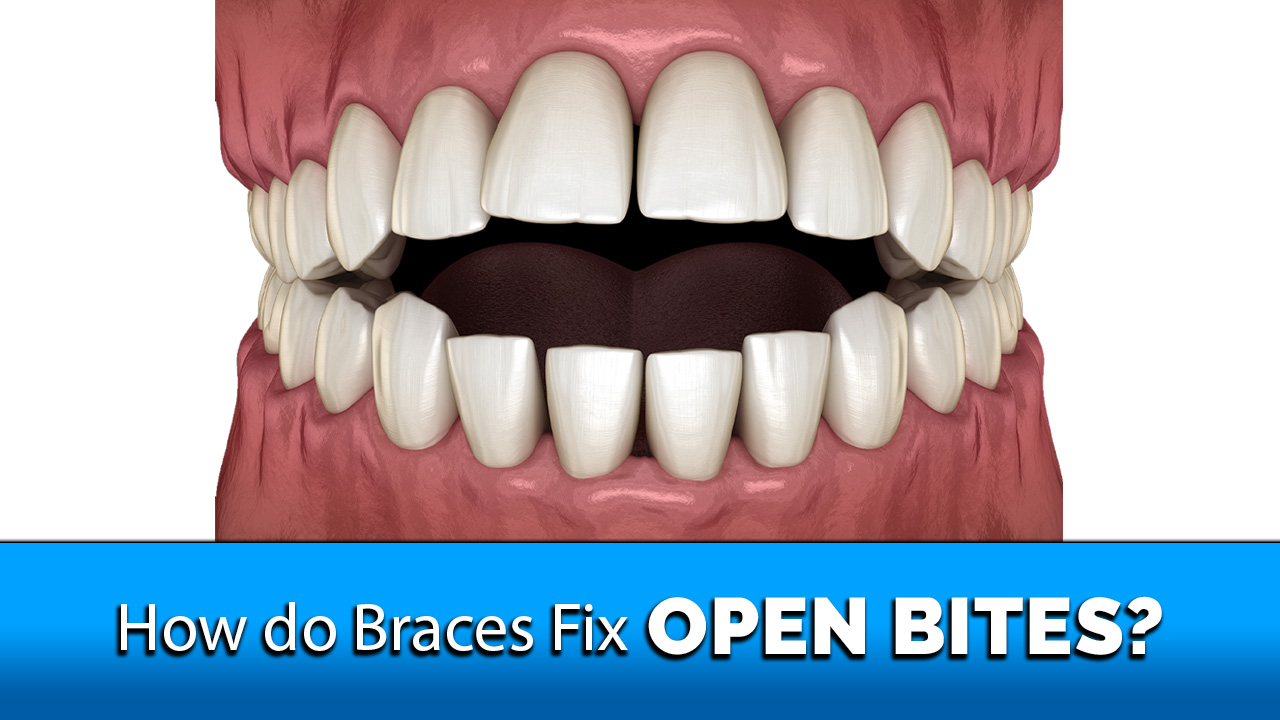
How Do Braces Fix Open Bites?
By Dr. Tyler Coles – Premier Orthodontics
Table of Contents
Open bites are a common problem orthodontists see every day. In this article, we’ll discuss 3 specific ways that open bites are corrected with braces. Then we’ll go into the process behind each method.
What Is An Open Bite?
Before we talk about how to fix open bites with braces, let’s first define what an open bite is….
An open bite is any time that the top teeth don’t touch the bottom teeth. There are a couple of different types of open bites – one instance occurs with the front teeth and the other occurs with the back teeth. Open bites can be caused by several factors, including tongue thrusting, thumb sucking, mouth breathing, pacifier sucking, digit sucking habits, a baby bottle, or just the patient’s growth pattern.
In this article, we won’t go into detail regarding what causes an open bite, but instead, we’ll be discussing an open bite that occurs with the front teeth, also known as an anterior open bite. (the image below both show examples of anterior open bite)
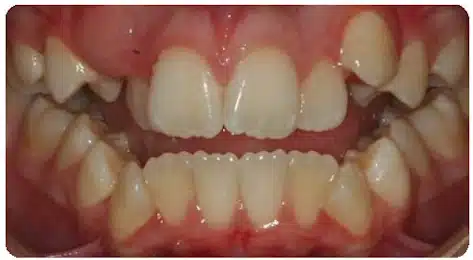
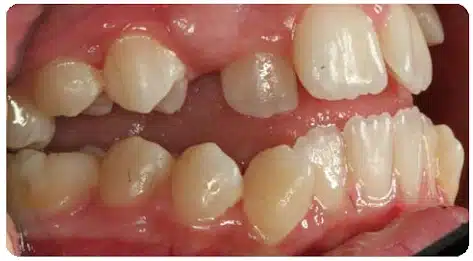
Even though an anterior open bite is a common bite problem and orthodontists see them routinely, how we choose to fix them does vary. The method we choose will usually depend on how severe the open bite is.
In this article, we’ll discuss three of the most common methods of orthodontic treatment we prefer at Premier Orthodontics when correcting open bites for our patients. We’ve found, after research, training, and years of experience, that these three methods are effective and stable ways to fix most anterior open bite problems.
Fixing Open Bites With Braces & Rubber Bands
The first type of orthodontic treatment we’ll discuss is a mild open bite. The patient shown in this picture is a good example of a mild open bite – you can see that her top teeth don’t quite touch the bottom teeth in the front.
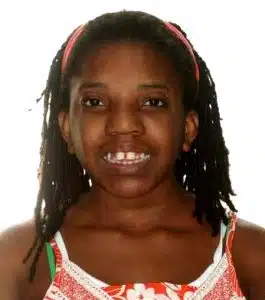
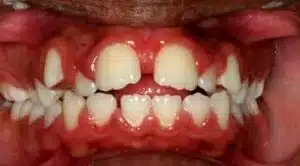
This type of bite is often caused by a tongue thrusting habit. For this type of open bite, our treatment plan included a combination of braces and elastics to help bring the top teeth down and the bottom teeth up.
As you can see in the videos below, by connecting a rubber band between the upper and lower teeth and keeping it in place over a while, the top and bottom teeth will respond to the pressure and correctly re-align, eventually closing the mild open bite altogether. Additionally, it may be necessary to address the tongue thrusting habit to get full open bite correction.
(Two different rubber band patterns can be used. See them both demonstrated in the two videos below.)
Triangle Rubber Bands to Fix an Open Bite
Anterior Rubber Bands to Fix an Open Bite
With the patient we showed earlier, you can see that braces with rubber bands helped to fix her open bite and give her a great smile.



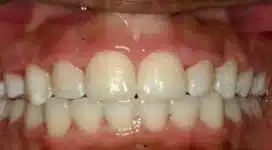
Fixing an Anterior Open Bite With Braces and Extractions of the Upper and Lower Teeth
The next type of open bite pattern we’ll discuss is a moderate open bite. In moderate anterior open bite malocclusion cases, the teeth are often overcrowded, making them sit at a protruded angle. You’ll notice that it prevents certain teeth on the upper and lower jaws from ever touching. The patient below is a good example.

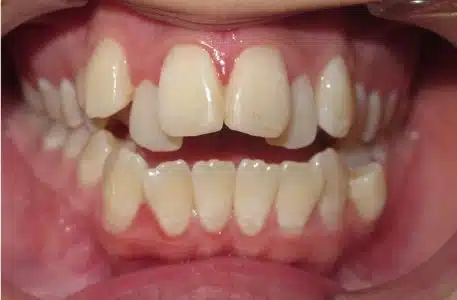
Due to the severity of her bite and her crowding, we recommended that two permanent adult teeth be extracted on the upper arch and the lower arch.
This short animation will demonstrate how taking out teeth on the upper arch and lower arch, and then closing the space can help reduce the protrusion of the front teeth, correct the crowding, and help to close the open bite.
Notice in the animation how we usually have the bicuspid (or premolar teeth) extracted, and then we close the space and correct the open bite using braces.
Once this space is closed, you won’t be able to tell that teeth were ever removed, plus the bite will look better and function better!
Going back to our patient, she had two permanent teeth on her upper arch and two permanent teeth on the lower arch extracted. We closed that space using braces and by the time we were done, she had a beautiful smile, no spaces, and her open bite was completely corrected.



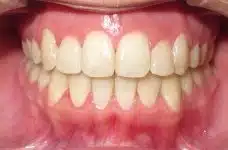
Check out our video below for a full walk-through of how braces and extractions helped this patient with their open bite.
Fixing Open Bites With Braces and TADS or Miniscrews as Part of the Orthodontic Treatment
The last type of treatment method we’ll discuss is a severe open bite. Severe open bites may be too severe to fix with braces and extractions alone. Instead, TADS or Temporary Anchorage Devices (Also sometimes called Orthodontic Miniscrews) may be recommended, in combination with braces as one of the treatment options.
The patient pictured below is a good example of a severe open bite. Her bite has the same open bite pattern as the patient previously discussed, but it is more severe. She would benefit from braces and orthodontic mini-screws.

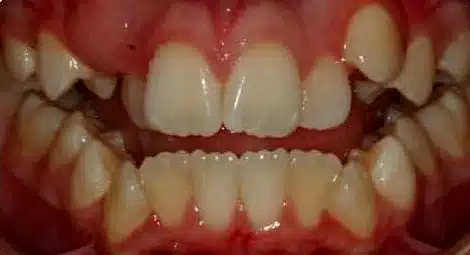
You can see in the picture below that ONLY the molar teeth are touching in this patient and none of the rest of the teeth can make contact.
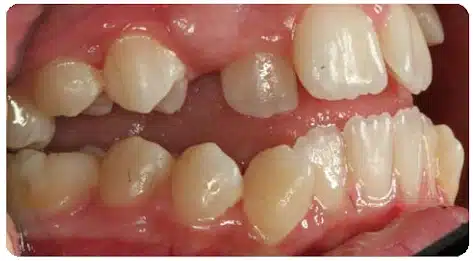
If there was a way to push her molars up (known as intruding the molars), the lower jaw would swing forward and the open bite would close. This is where TADS or orthodontic mini-screws come in….
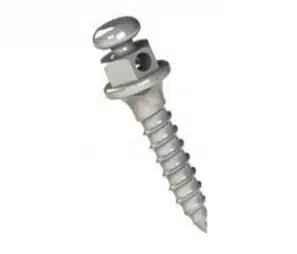
Picture of a TAD or Orthodontic Mini-screw
TADS or orthodontic mini-screws act as an anchor. If an orthodontist needs to push or pull teeth in a certain direction, a mini-screw will assist by acting as an anchor you call push or pull against.
An orthodontic mini-screw is placed between the teeth or sometimes in the roof of the mouth.
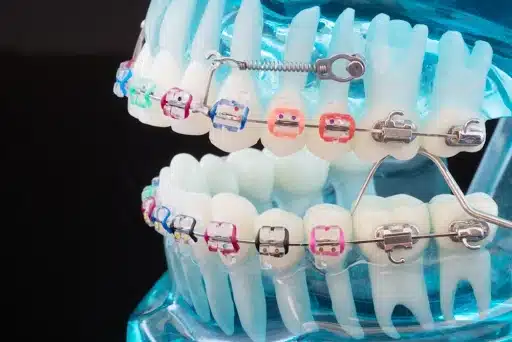
When a TAD is placed, an orthodontist will numb the area where this mini-screw will be placed. In only a few seconds, the mini-screw can be placed through the gums and into the bone surrounding the teeth. The insertion is very quick and the numbing makes sure there is minimal discomfort. Once placed, the mini-screw will be stable in the bone and will assist in certain types of orthodontic tooth movements.
This may sound like a scary procedure, but it’s quite easy. Watch the video below to see a demonstration of an actual patient receiving an orthodontic mini-screw. You’ll see in the video that the entire process is pain-free and over in just a matter of minutes.
In patients with an open bite, an orthodontic mini-screw can help with the intrusion of the molars on the upper arch.
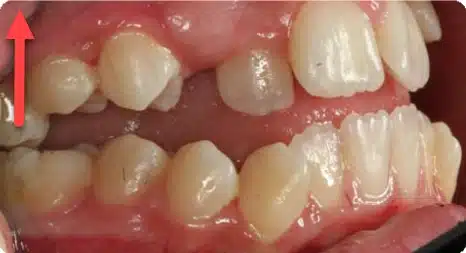
Normally molar intrusion is a difficult movement to achieve with braces alone. This is where the orthodontic mini-screw can help… By placing the TAD in the roof of the mouth:
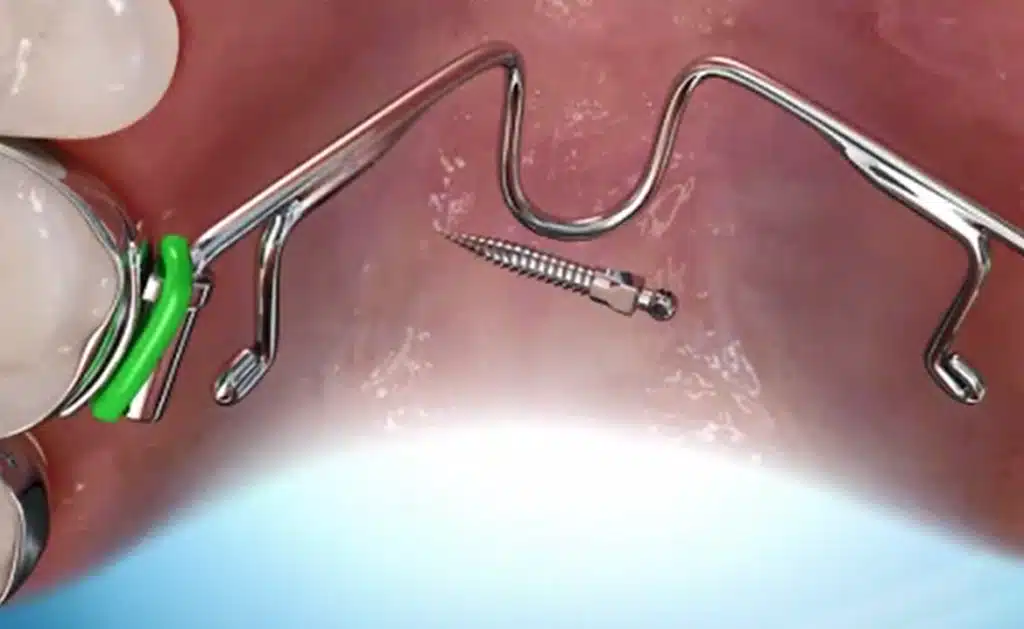
…and then connecting the TAD to the molar teeth with an elastic or spring…
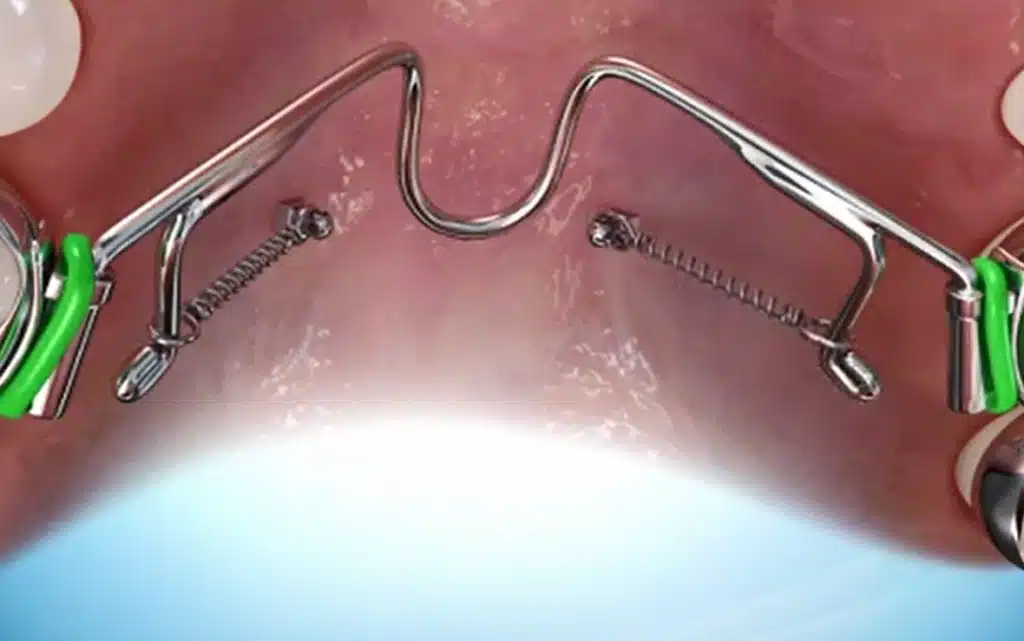
…the spring will pull the molar teeth up and intrude on them while the miniscrew stays stable in the bone.
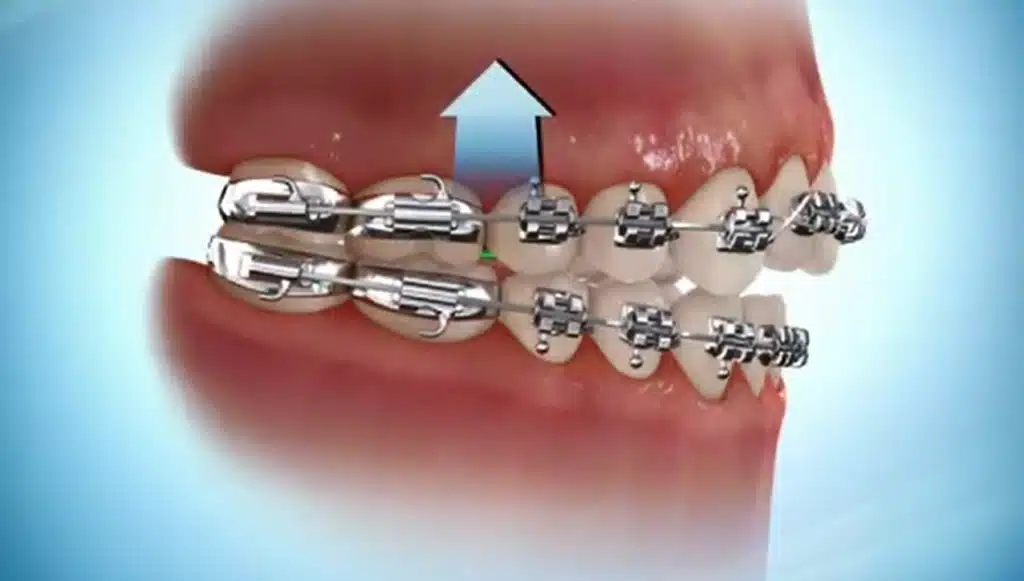
This short animation will show you how orthodontic mini-screws are placed in the oral cavity to help intrude molars and fix severe open bites.
Going back to the treatment plan for our patient, she had braces with our office and had a TAD placed in the roof of the mouth to intrude her molars. With these treatment methods, she was able to get full open bite correction (as you can see from her photos below)…



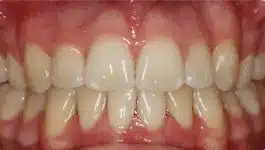

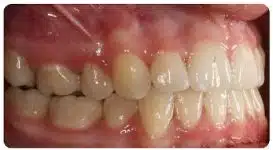
How Can I Tell if Me or My Child Needs Braces to Fix an Open Bite?
If you think you or your child may need braces to correct an open bite, the best place to start is with a free consultation with an orthodontist in your area.
In some cases, Invisalign can also be used to treat open bites. Check out our video below to see how it works.
Braces in Phoenix, Chandler, Maricopa, and Casa Grande
Premier Orthodontics has 6 locations providing braces and Invisalign in Phoenix, Chandler, Gilbert, Maricopa, Casa Grande, and Glendale as well as the surrounding areas.
Schedule your free consultation for braces or read our comprehensive guide to the cost of braces . (We are very transparent about our process and our pricing, as you’ll see in this guide.)
Schedule a Free Braces Consultation For You or Your Child
Thinking about getting started with braces?
You can schedule a 100% free consultation and find out if clear braces the best choice for you.
Whether you’re thinking about braces for kids, braces for an adult, or even Invisalign, we’ve got you covered!
Click below to learn how you can get started with braces for as low as $89/month.

Dr. Tyler Coles
Dr. Tyler Coles joined his brother’s practice in 2012 and since then, the practice has expanded to six locations and over 20,000 patient lives transformed throughout Arizona.
Dr. Coles has also co-authored two books with his brother ( “More Than Straight Teeth! A Parent’s Guide to Orthodontics” and “Start Smiling Now! What Every Parent Needs to Know About Orthodontics”). Request a free copy of "More that Straight Teeth" to better understand the process of braces.

